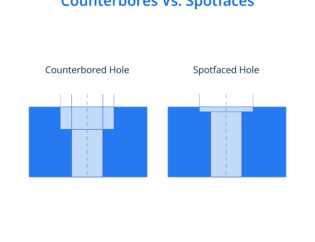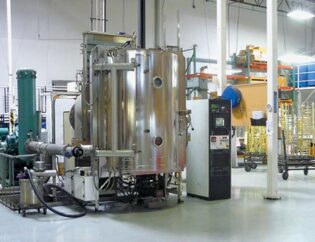In the rapidly evolving world of manufacturing, CNC laser welding stands out as a transformative technology. This guide delves into the intricacies of CNC laser welders, exploring their mechanics, applications, and advantages. Understanding this technology is crucial for professionals seeking to enhance precision and efficiency in their projects.
Readers can expect to learn about the fundamental principles of CNC laser welding, including its operational processes and the types of materials it can effectively join. Additionally, the guide will cover best practices, maintenance tips, and troubleshooting techniques to ensure optimal performance.
By the end of this guide, readers will have a comprehensive understanding of CNC laser welders, empowering them to make informed decisions in their manufacturing processes. Whether you are a seasoned professional or a newcomer, this resource will equip you with the knowledge needed to leverage this innovative technology effectively.
CNC Laser Welder: A Comprehensive Guide
Introduction
CNC laser welding machines have revolutionized the manufacturing industry by providing high-precision welding solutions for various applications. These machines utilize advanced laser technology to join metal and thermoplastic parts with minimal thermal distortion, making them ideal for industries such as automotive, aerospace, and electronics. In this guide, we will explore the technical features, types, and advantages of CNC laser welders, focusing on offerings from leading manufacturers like Weldlogic Inc., STYLECNC, and Coherent.
Technical Features of CNC Laser Welders
CNC laser welders are equipped with several advanced features that enhance their performance and usability. Below is a comparison table highlighting the key technical specifications of various models:
| Feature | LWT1500 | LWT2000 | LWT3000 |
|---|---|---|---|
| Laser Power | 1500W | 2000W | 3000W |
| Welding Depth | SS ≤ 3mm, Aluminum ≤ 3mm | SS ≤ 4mm, Aluminum ≤ 4mm | SS ≤ 6mm, Aluminum ≤ 6mm |
| Laser Wavelength | 1080 ± 10nm | 1080 ± 10nm | 1080 ± 10nm |
| Fiber Length | 10m | 10m | 10m |
| Cooling System | Industrial water chiller | Industrial water chiller | Industrial water chiller |
| Working Voltage | 220V/2P | 220V/2P | 380V/3P |
| Control System | CNC Controller | CNC Controller | CNC Controller |
These features ensure that CNC laser welders can handle a variety of materials and welding tasks with precision and efficiency.
Types of CNC Laser Welders
CNC laser welders come in various types, each designed for specific applications and materials. Below is a comparison table of the different types of CNC laser welders available:
| Type | Description | Applications |
|---|---|---|
| Handheld Laser Welders | Portable devices for manual welding tasks. | Jewelry, small repairs, DIY projects. |
| Automatic Laser Welders | Fully automated systems for high-volume production. | Automotive, electronics, mass production. |
| 3D Laser Welding Robots | Robotic systems for complex welding tasks in three-dimensional space. | Aerospace, intricate components. |
| CNC Laser Welding Machines | Computer-controlled machines for precision welding of various materials. | Industrial manufacturing, precision parts. |
Each type of CNC laser welder offers unique advantages, making them suitable for different industrial needs.
Advantages of CNC Laser Welders
CNC laser welders provide numerous benefits over traditional welding methods. They offer high precision, reduced heat input, and minimal distortion, making them ideal for delicate materials. Additionally, they can operate continuously, enhancing productivity in mass production environments. The ability to automate the welding process also reduces labor costs and improves consistency in weld quality.
Applications of CNC Laser Welders
CNC laser welders are widely used across various industries, including:
– Automotive Manufacturing: For welding body panels and components with high precision.
– Aerospace: In the assembly of aircraft parts, ensuring structural integrity and aerodynamic efficiency.
– Electronics: For joining delicate components in devices like smartphones and laptops.
– Jewelry: In the repair and creation of intricate designs with minimal heat distortion.
Conclusion
CNC laser welders represent a significant advancement in welding technology, offering precision, efficiency, and versatility. With various models available from manufacturers like Weldlogic Inc., STYLECNC, and Coherent, businesses can find the right solution to meet their specific welding needs. As industries continue to evolve, the demand for high-quality, automated welding solutions will only increase, making CNC laser welders an essential tool in modern manufacturing.
FAQs
1. What is a CNC laser welder?
A CNC laser welder is a machine that uses a computer numerical control system to direct a laser beam for precision welding of metals and thermoplastics.
2. What are the advantages of using a CNC laser welder?
CNC laser welders offer high precision, reduced heat input, minimal distortion, and the ability to automate the welding process, which enhances productivity and consistency.
3. Can CNC laser welders be used for different materials?
Yes, CNC laser welders can weld various materials, including stainless steel, aluminum, copper, and even dissimilar metals.
4. How does a CNC laser welder differ from traditional welding methods?
CNC laser welding uses a focused laser beam for joining materials, resulting in less heat distortion and higher precision compared to traditional methods like MIG or TIG welding.
5. Where can I find CNC laser welders for sale?
CNC laser welders can be purchased from manufacturers like Weldlogic Inc. (weldlogic.com), STYLECNC (www.stylecnc.com), and Coherent (www.coherent.com).






